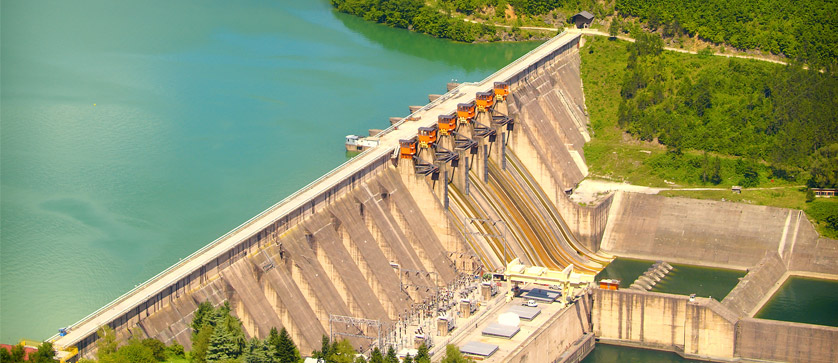Hydroelectric Power
Hydroelectric power is responsible for creating almost one-fifth of the world’s electricity. The United Kingdom has been using hydroelectric power for more than a century, currently generating more than 5,885 GWh of electricity per year using purely hydro and providing a further 2,800 MW capacity of existing pumped storage.
It uses water to create electricity, with a turbine working from the energy of flowing or falling water to turn its blades. As the flowing water spins the turbine, this turns a shaft rotating at a fixed speed which is connected to an electricity generator.
The water is directed downwards through the turbine by the use of hydroelectric dams so that the process can be controlled to provide maximum energy. The hydraulic turbine converts the flowing water's energy into mechanical energy. Then, the mechanical energy is converted into electricity by the hydroelectric generator.

© eljko Radojko / Adobe Stock
Types of hydropower
There are four main types of hydroelectric power: dams, pumped storage, rivers and tidal power. Dams are the most common type, as they channel the water to drive the turbines. With pumped storage, the water is moved between reservoirs at varying elevations to provide electricity on demand.
Running rivers are usually used for smaller applications, with the water flowing downstream powering the generator as it passes. It relies on the river providing a constant flow of water in order to work effectively.
Tidal power relies on the predictable movement of the tide, which generates large amounts of energy twice daily. Sometimes, reservoirs can also be used at periods of high demand.
Benefits
There are many benefits to using hydraulic power to create hydroelectricity. One of the main ones is the fact it's renewable. It's a consistent, predictable form of electricity, which can match demand and work with other types of renewable electricity.
Hydroelectric power is extremely flexible and can reach maximum capacity in less than two minutes - it can stop equally quickly. It's ideal for meeting peak demands throughout the day and for balancing the generation of electricity as and when required.
When it's used in combination with other renewable means of power generation, such as solar and wind, it's ideal because it's more responsive than coal, gas, or nuclear power and can be turned on very quickly.
Environmental impact
A small-scale hydroelectric project on a river will have a comparatively small impact on the environment, while a system that requires the creation of a reservoir will have a larger impact on the ecosystem. Responsible suppliers ensure they follow the best principles when developing new sites for the generation of hydroelectric power.
When a tidal generator or dam are required, they are strictly planned and monitored to cause as little impact as possible on the surrounding environment. When the work has been completed, it can lead to a thriving biodiverse ecosystem.
After the water has passed through the turbine to create electricity, it will then continue through its natural cycle, as it isn't contaminated or affected in any way.
A hydroelectric generator can have a longer life than other forms of electricity generators. It can remain serviceable for up to 100 years after its first use, requiring little labour and lower maintenance costs than other forms of electricity generation, so it makes environmental and economic sense too.
Phoenix Hydraulics is one of the UK's largest specialist hydraulics companies, providing hydraulic engineering solutions across many industry sectors. We have a team of fully qualified mechanical and electrical engineers and we stock more than 70,000 hydraulic components for immediate delivery.
Give us a call on 01733 234800 for further information.


